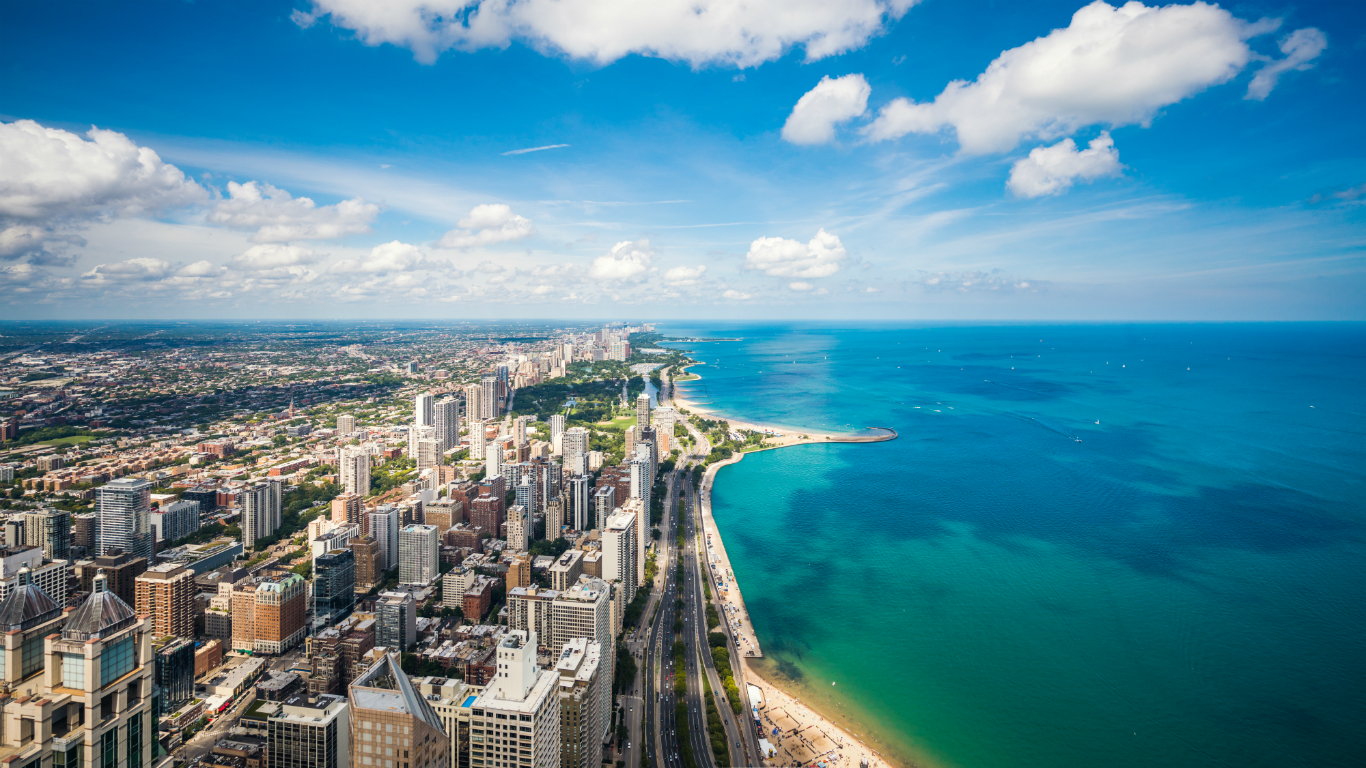Infrastructure
Invasive Fish Threaten the Great Lakes, and Could Devastate a Billion-Dollar Industry

Published:
Last Updated:

For nearly 30 years, the United States has been aware of a foreign invader that now occupies nearly all tributaries in the largest drainage basin in North America, including the mighty Mississippi river that flows from Lake Itasca, Minnesota, to the Gulf of Mexico south of New Orleans.
This intruder, the Asian carp, can grow to be over three feet long and weigh over 100 pounds. Its voracious appetite threatens native fish species and other aquatic wildlife and is now the most common fish in the 2,300-mile-long Missouri River.
On Friday, the U.S. Army Corps of Engineers approved on Friday a massive $700 million to $800 million project to keep the fish from breaching into the Great Lakes, which would wreak havoc on a multi-billion-dollar recreational fishing industry shared by the U.S. and Canada.
The project still requires congressional approval, but endorsement by the agency that would oversee it is a key step in the process.
The Brandon Road Lock and Dam project near Joliet, Illinois, would build infrastructure to ward off the Asian carp’s efforts to expand into new waters where they could spread to thousands of lakes in states and Canadian provinces in the Great Lakes region.
The massive project would install infrastructure to ward off the fish, including equipment to electrically stun them, to create underwater acoustics to deter them, and to sweep away smaller fish carried by the wake of barge traffic.
Asian carp were originally introduced into the U.S. as a management tool for aquaculture and sewage treatment, one of the countless examples of humans interfering with the environment and driving animals to extinction.
The invasive Asian carp is comprised of four different species that feed on aquatic plants, detritus, smaller fish and invertebrates, consuming up to 40% of their bodyweight daily and robbing native fish species of food sources and spawning areas. Silver carp, nicknamed “flying carp,” are known to leap up to ten feet out of the water, potentially striking and injuring fishermen and boaters.
The overuse of disposable plastic that winds up in the oceans may be an important topic these days, but one of the main drivers of extinction has included humans introducing invasive species that consume or otherwise fatally disrupt the natural cycles of native plants and animals. (You can find out about at least 19 genius inventions that can stop us form using so much plastic.)
The carp were first used in Louisiana catfish farms in the 70s to control snails and vegetation. Flooding in the 90s allowed the fish escape their confines and now inhabit most of the enormous Mississippi River watershed and now make up a majority of the fish in the Missouri River. These carp not only threaten to harm recreational fishing but also could tip certain already threatened or endangered fish and mollusk species into extinction. Some species may have even recently gone extinct.
The average American spends $17,274 on debit cards a year, and it’s a HUGE mistake. First, debit cards don’t have the same fraud protections as credit cards. Once your money is gone, it’s gone. But more importantly you can actually get something back from this spending every time you swipe.
Issuers are handing out wild bonuses right now. With some you can earn up to 5% back on every purchase. That’s like getting a 5% discount on everything you buy!
Our top pick is kind of hard to imagine. Not only does it pay up to 5% back, it also includes a $200 cash back reward in the first six months, a 0% intro APR, and…. $0 annual fee. It’s quite literally free money for any one that uses a card regularly. Click here to learn more!
Flywheel Publishing has partnered with CardRatings to provide coverage of credit card products. Flywheel Publishing and CardRatings may receive a commission from card issuers.
Thank you for reading! Have some feedback for us?
Contact the 24/7 Wall St. editorial team.